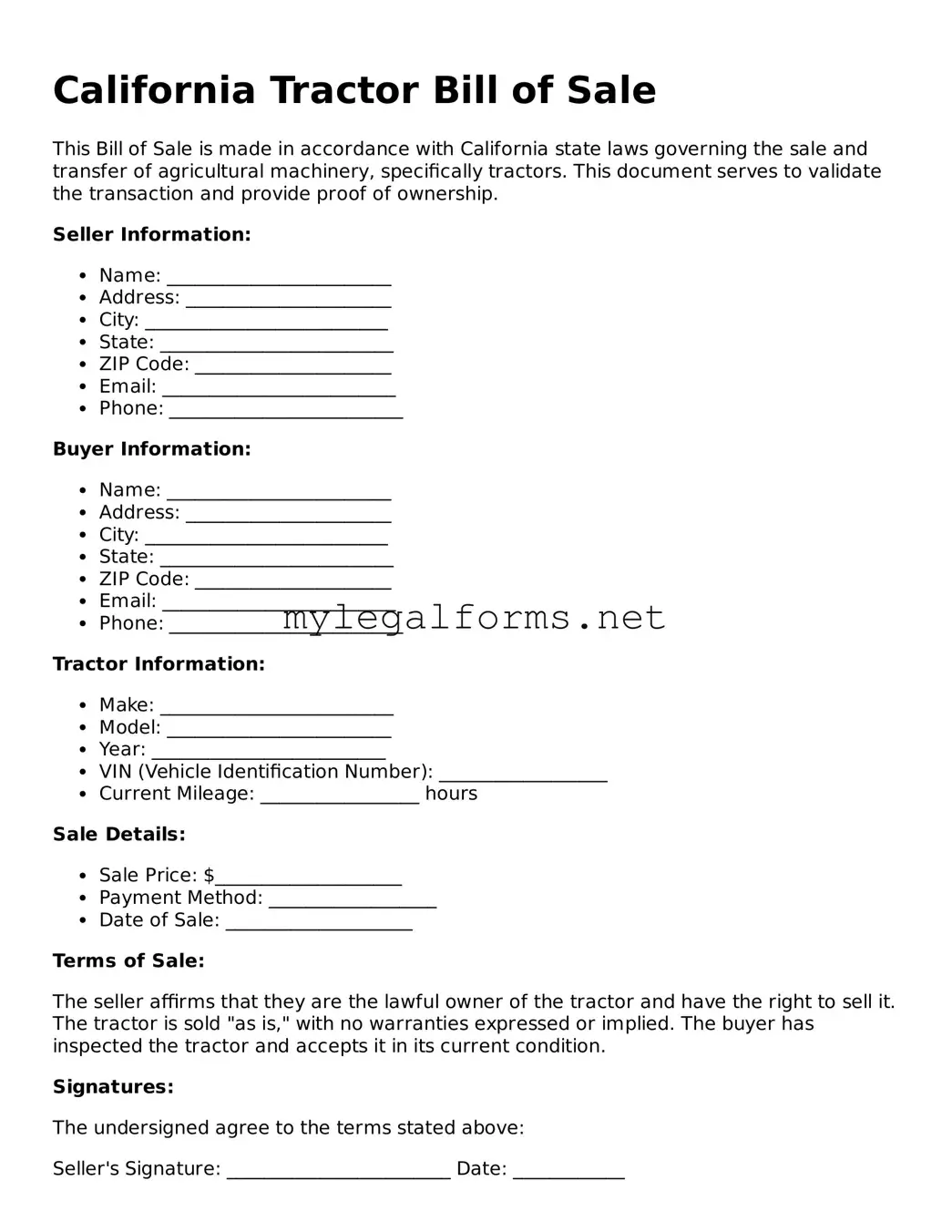When completing the California Tractor Bill of Sale form, individuals often make several common mistakes that can lead to complications. One frequent error is failing to provide complete information about the tractor. This includes missing details such as the vehicle identification number (VIN), make, model, and year. Incomplete information can create confusion and may delay the registration process.
Another mistake is neglecting to include the sale price. It is essential to accurately state the amount for which the tractor was sold. Omitting this detail can raise questions during a future transaction or when filing taxes. Additionally, not providing the date of sale can also cause issues. This date is important for establishing the timeline of ownership.
People sometimes forget to sign the form. Both the seller and the buyer must sign to validate the sale. A missing signature can render the document invalid, leading to potential disputes later. Furthermore, failing to provide the correct names and addresses of both parties can create complications in ownership transfer.
Another common oversight involves not having a witness or notary present during the signing process. While not always required, having a witness can help verify the transaction and protect both parties. In some cases, notarization may be necessary, depending on the circumstances of the sale.
Some individuals do not keep a copy of the completed bill of sale for their records. This document serves as proof of the transaction and can be important for future reference. Not retaining a copy can lead to challenges in proving ownership or the terms of the sale.
Additionally, people may incorrectly assume that the bill of sale is sufficient for registration. In California, a bill of sale is often necessary but not the only requirement. Buyers should also be aware of other documentation needed for registration, such as a title or smog certification.
Inaccurate descriptions of the tractor's condition can also be problematic. Buyers need to know if there are any defects or issues. Misrepresenting the condition can lead to disputes and potential legal ramifications.
Lastly, some individuals fail to check for any liens on the tractor before completing the sale. A lien indicates that there is a claim against the property, which can complicate ownership transfer. It is advisable to conduct a lien search to ensure a clear title.
